History
Exactly where C.B. Macdonald’s Double Plateau template originated is unknown, but it’s likely from the British Isles. Sandy windswept soil in that region often formed natural plateaus in green complexes.
Characteristics
Macdonald often placed the double plateau green complex on his longest par-4s, making already difficult holes even more challenging. The holes are typically straight and often feature a Principal’s Nose bunker well in front of the green. A double plateau green has three distinct levels that are all pinnable. Bunkers often lie behind the plateaus or on either side of the green.
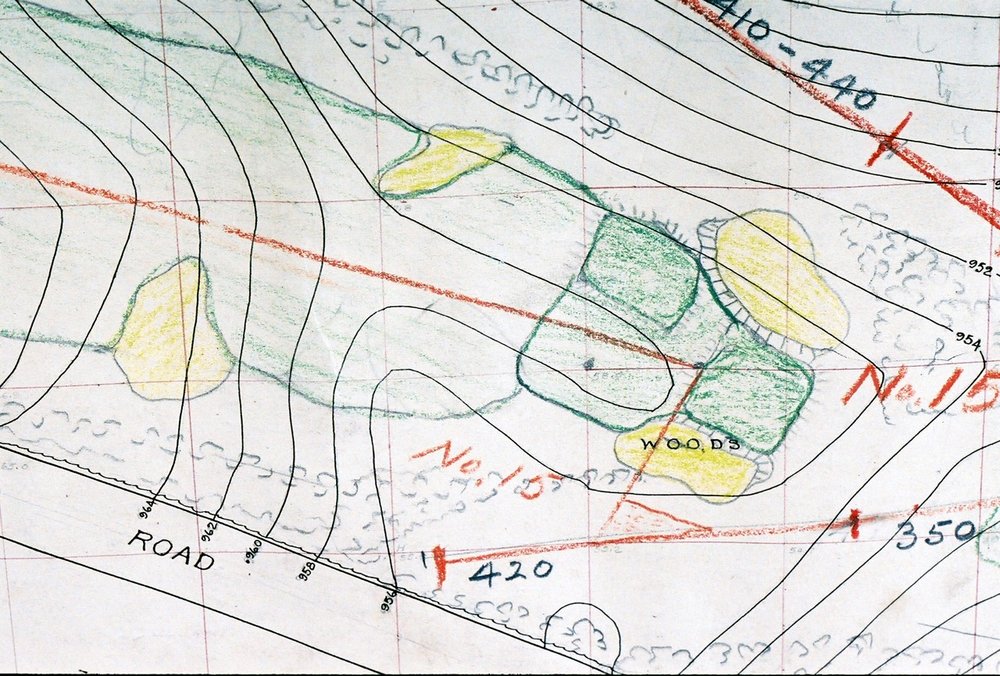
A sketch of Lookout Mountain's double plateau green
Strategy
The Double Plateau hole is generally one of the toughest on the course, requiring two great shots to have a chance at birdie. A good tee shot still leaves a difficult second shot into the tiered green with heavy bunkering around the putting surface. Since most Double Plateau holes are long par-4s, players will need to avoid the Principal’s Nose bunker fronting the green while attempting to reach the correct tier. The approach to the Double Plateau is all about distance control. Players will have a reasonable birdie chance if they reach the proper tier, but offline shots result in treacherous up-and-downs and long putts. Due to the sharp dropoffs on the edges of the green, the best place to miss is typically short of the green.
National Golf Links of America – 11th – par 4 – 430 yards
The long par-4 11th at National Golf Links of America is a brilliant example of the Double Plateau. A good drive will leave a player with a mid to long-iron approach over the road! From there, the next task is avoiding the deep Principal’s Nose bunker that protects the severely sloped green from a low running approach. The green is L-shaped and features three distinct tiers on the left, middle and right.
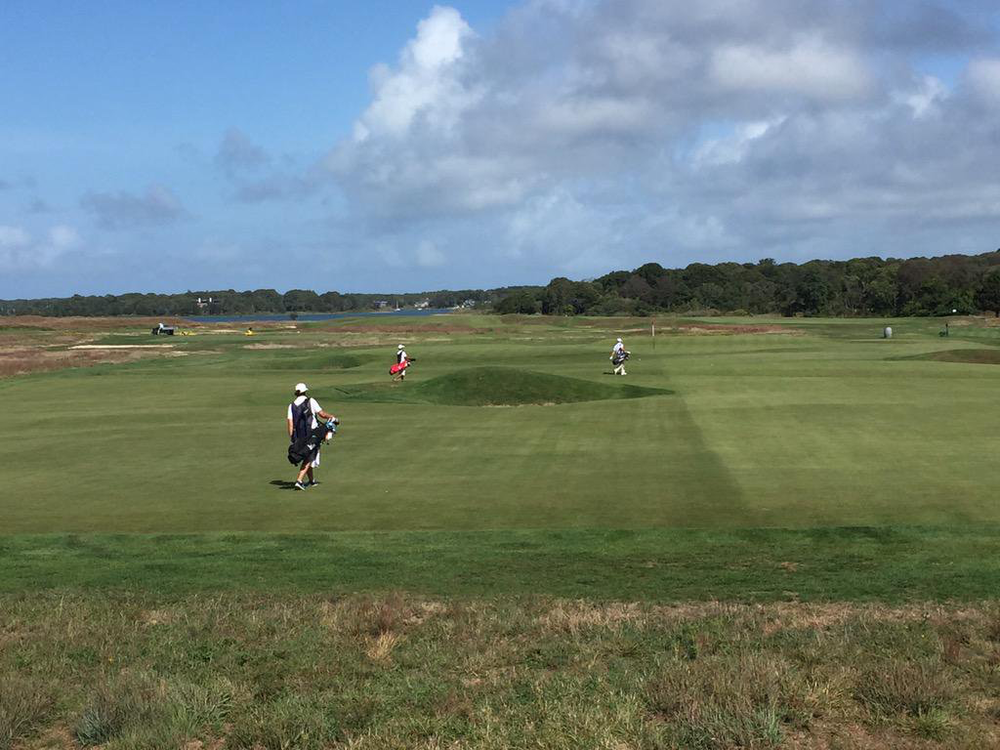
A look at the principal's nose bunker that fronts NGLA's double plateau green - Photo Credit: Michael Blackham
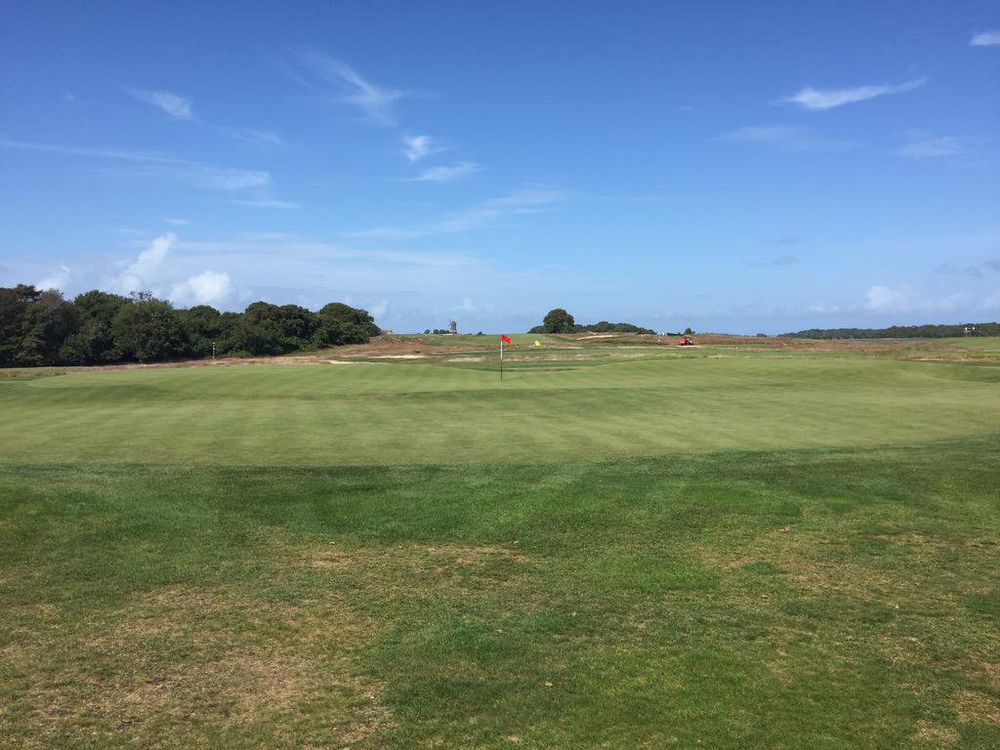
A look at NGLA's double plateau green - Photo Credit: Michael Blackham
Chicago Golf Club – 6th – par 4 – 395 yards
At Chicago Golf’s Double Plateau hole, players first need to navigate a bunker that sits in the middle of the sixth fairway. A good drive will leave a short-iron approach to the tiered green. Poor approach shots leave nearly impossible up-and-downs.
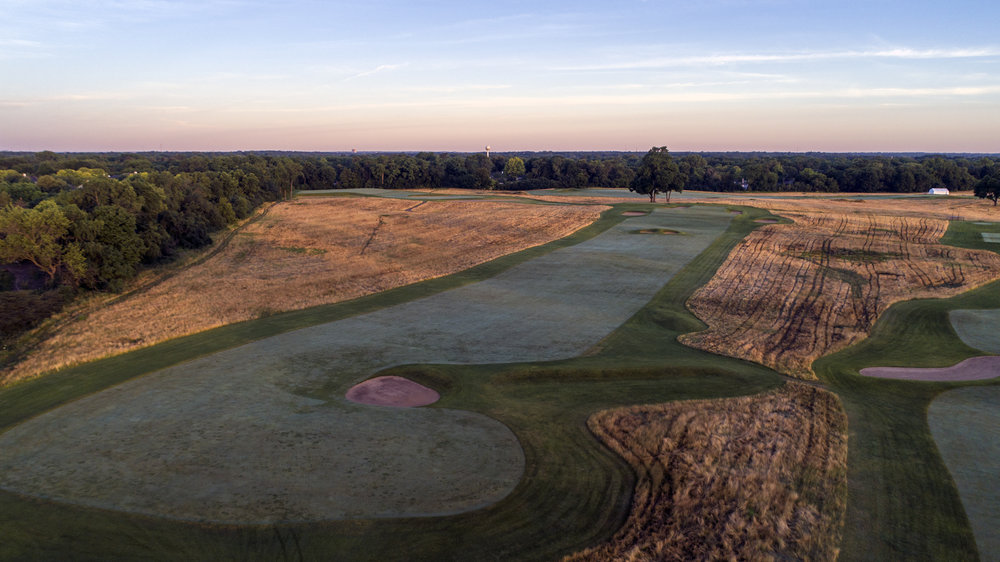
Tee shots on Chicago Golf's 6th must be fit between the forebunker and Principal's Nose, in the correct half of the fairway
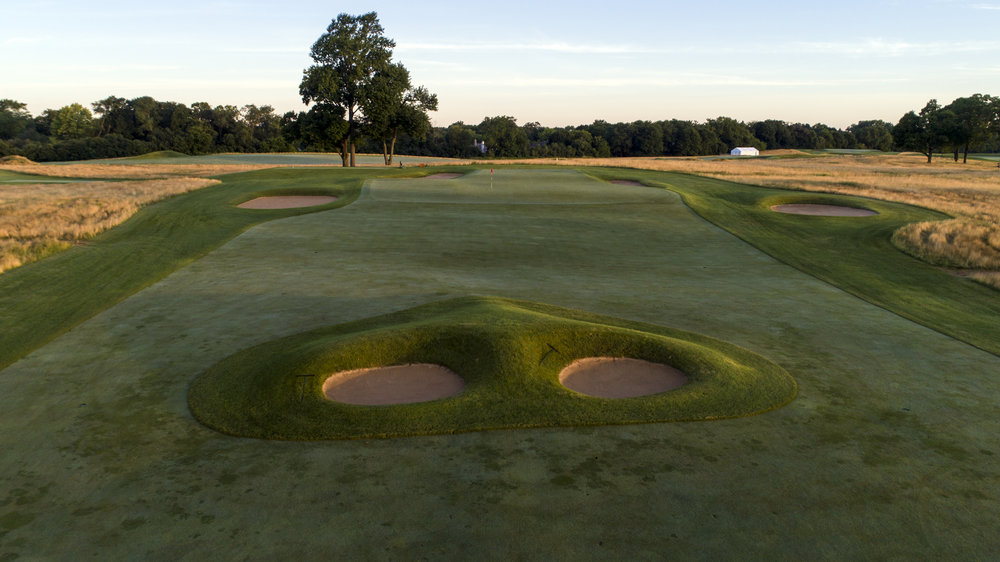
The approach over the Nose into the Double Plateau green
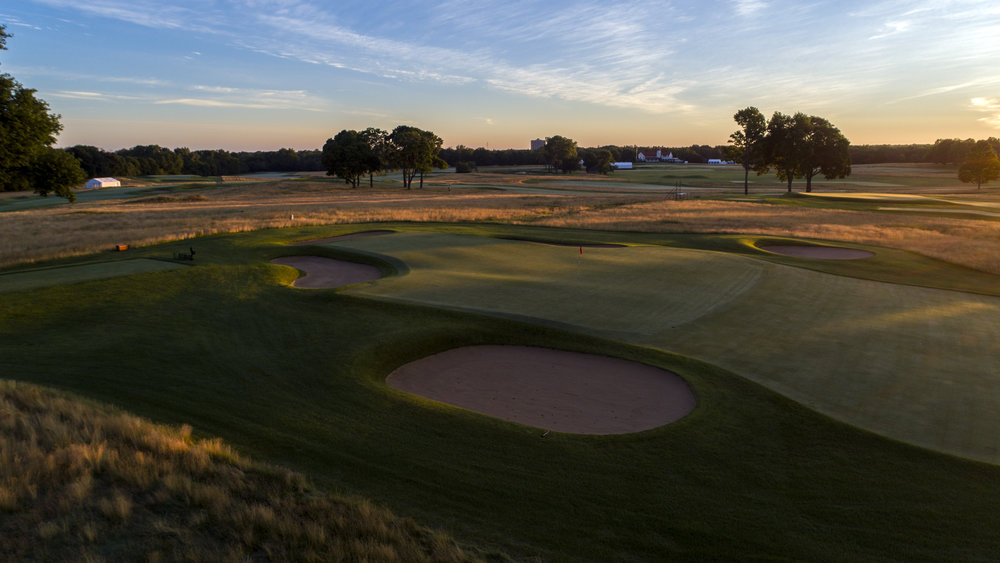
The green from the left side
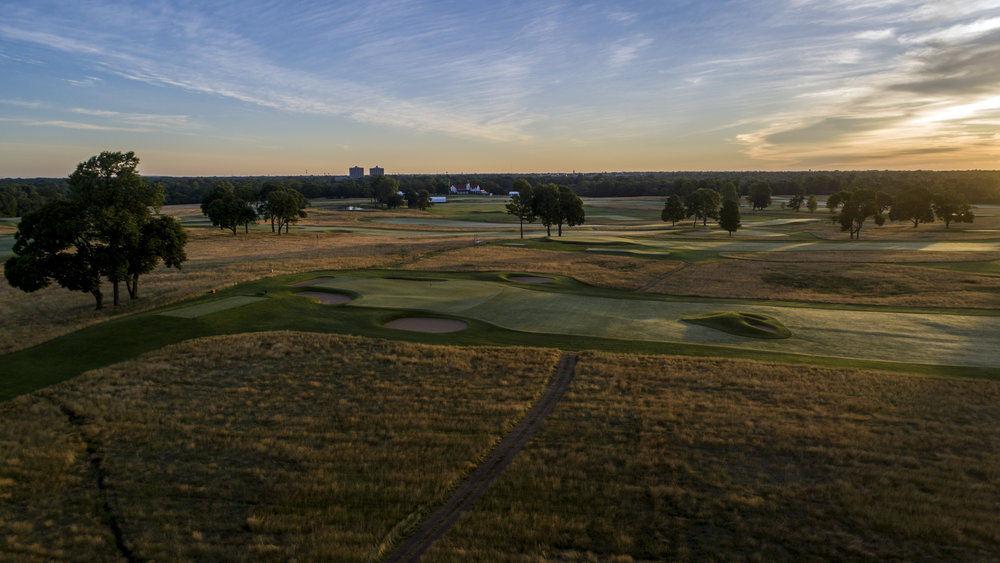
The low light reveals the incredible contours between plateaus
Fishers Island Club – 9th – par 4 – 365 yards
One of the most famous Double Plateaus is at Seth Raynor’s outstanding Fishers Island, which features the beautiful backdrop of the Long Island Sound. Players are faced with a blind tee shot before a short approach to the tough green. The fairway bunker on the left is one of just two fairway bunkers on the course. The toughest pin on the infinity green is the back position as it looks like it is floating on the water. A blind back bunker adds to the difficulty of approaches into this iconic green.
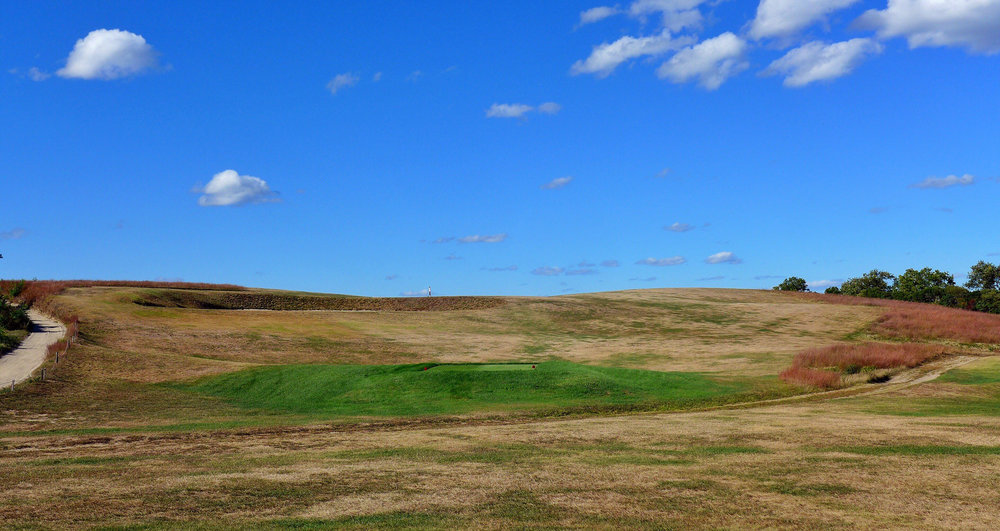
The 9th tee shot at Fishers Island - Photo Credit: Jon Cavalier
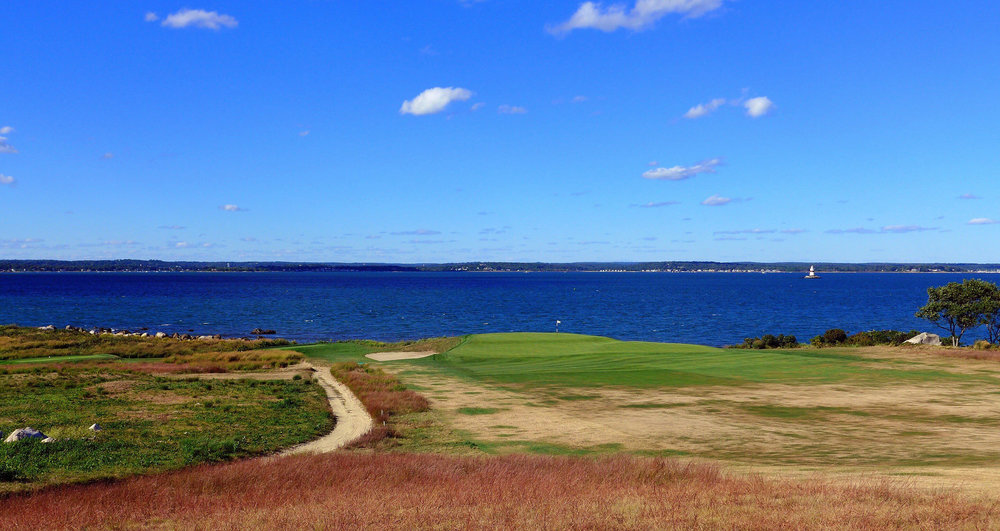
The downhill approach - Photo Credit: Jon Cavalier
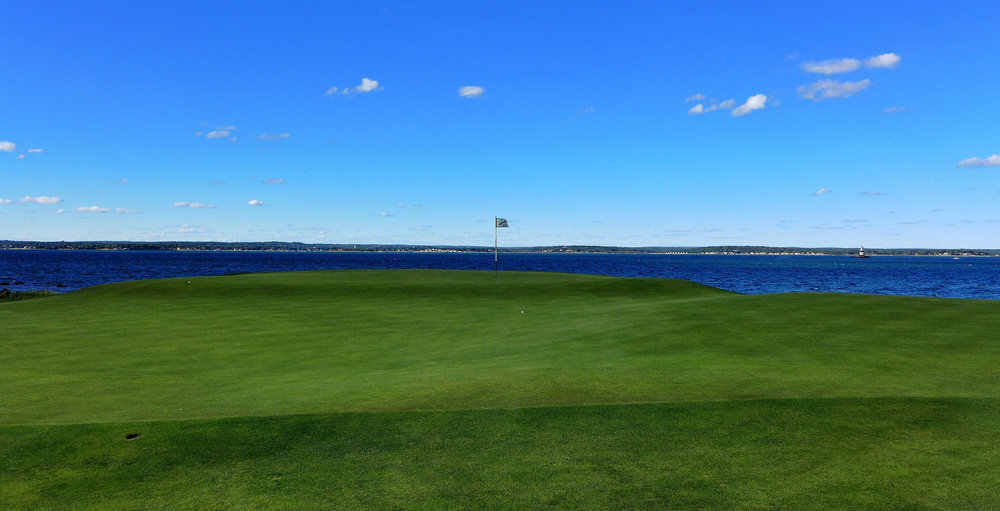
Just short of Fishers Island's 9th, with tiers extending into infinity
Blue Mound Golf & C.C. – 2nd – par 4 – 415 yards
The only Raynor design in Wisconsin, Blue Mound has one of the best Double Plateau greens in the world. Off the tee, a player is challenged with a semi-blind shot. After finding the fairway, a mid-iron is left to the dramatic green complex. A back right position is the toughest on this green as each side is guarded by extremely deep bunkers.
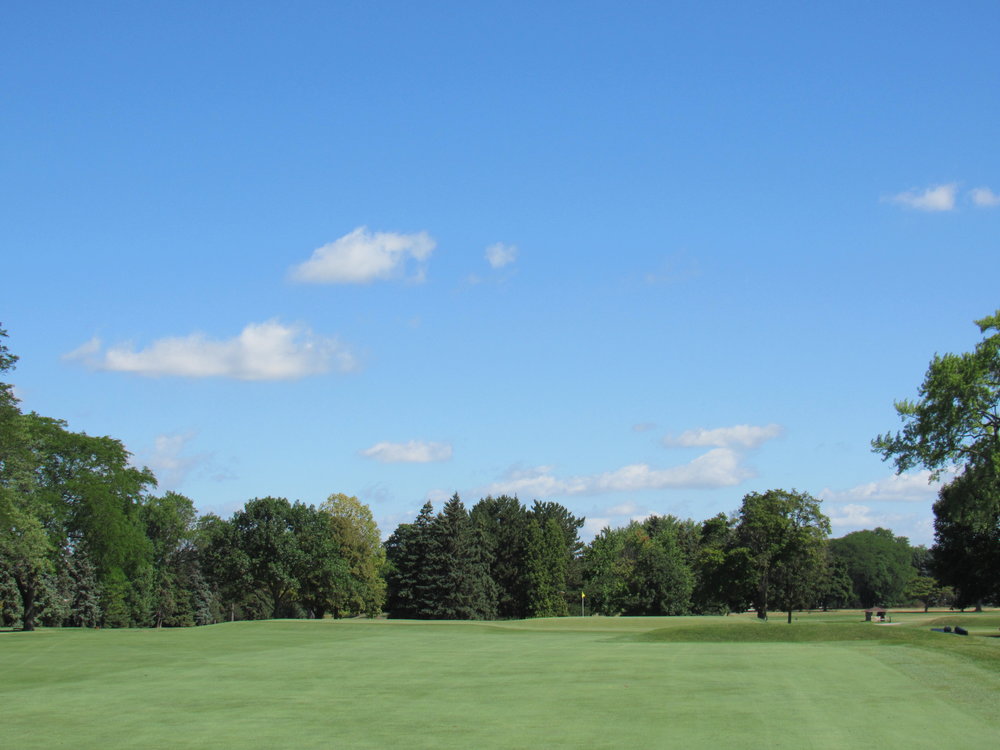
The approach to the tough 2nd at Blue Mound
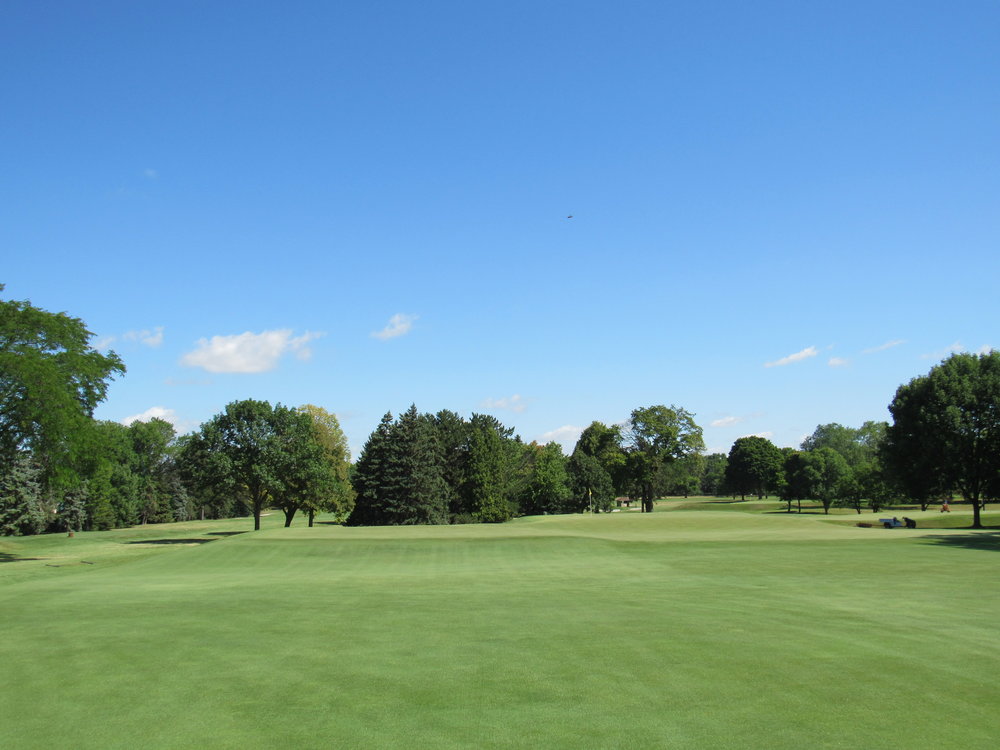
A closer look at Blue Mound's double plateau
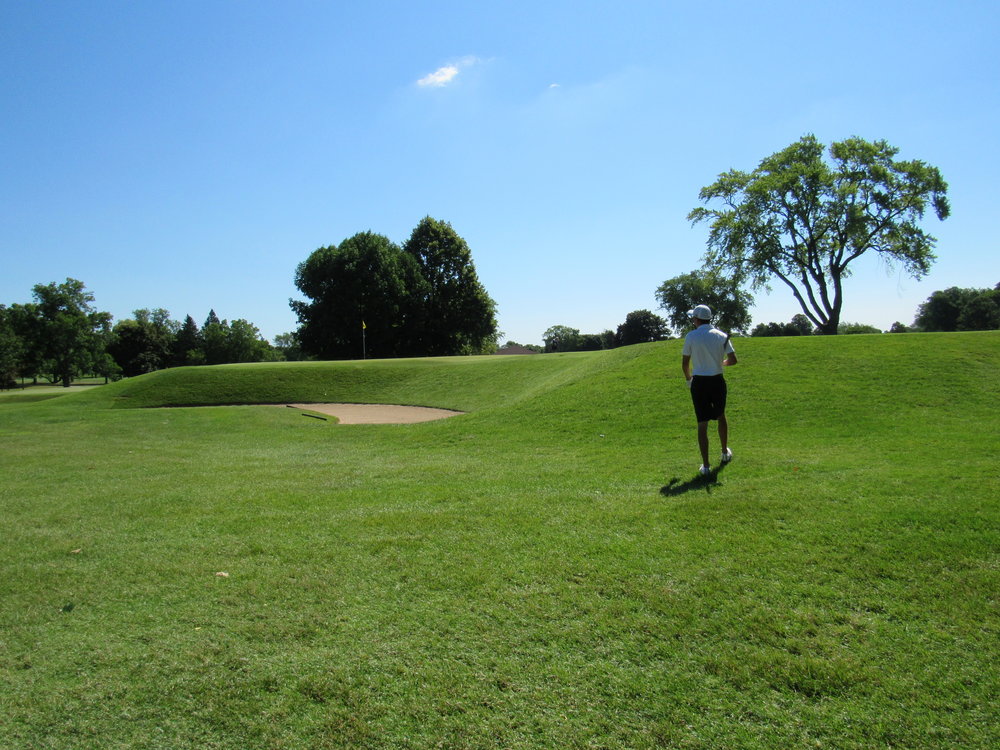
The deep bunker left of the green
St. Louis Country Club – 15th – par 5 – 495 yards
The Double Plateau at St. Louis C.C. is the short par-5 15th, where a good tee shot will give long hitters a run at the green in two. The green is massive, measuring over 10,000 square feet, and has plenty of twists and turns making a long putt difficult to get down in two. It is protected by bunkers on all corners, a likely destination for a player’s second shot.
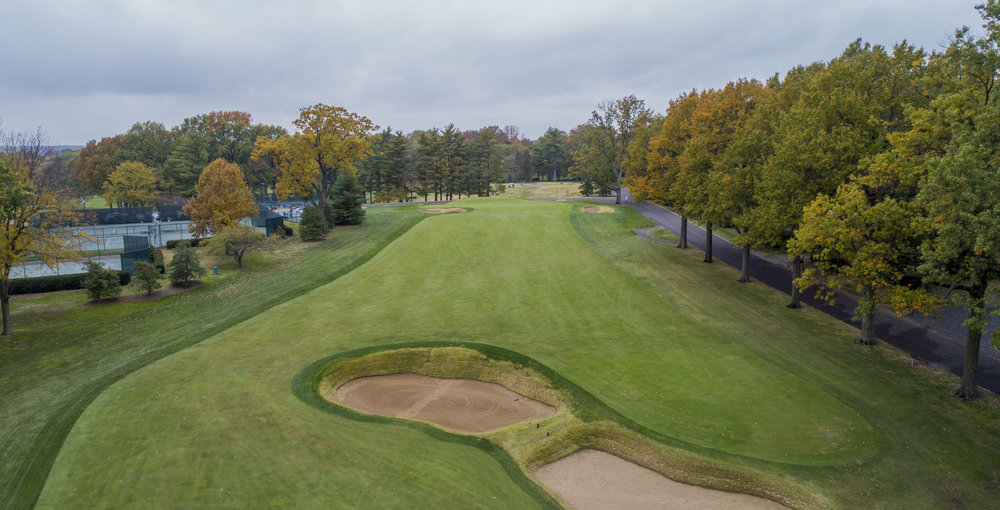
The short par-5 15th calls for a long-iron or fairway wood approach to the Double Plateau green complex.
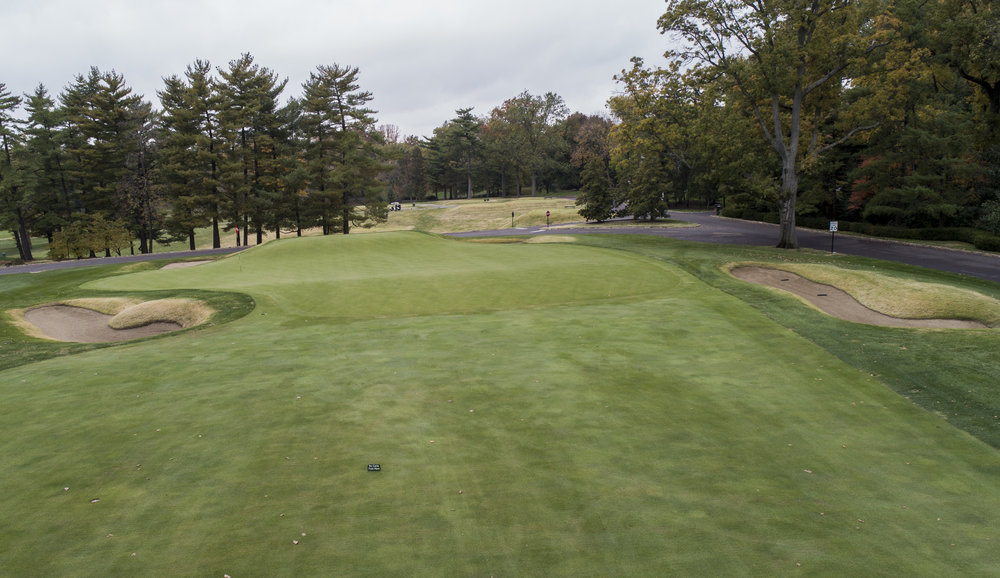
The view from short and above illustrates just how many challenging pin positions are available from this design
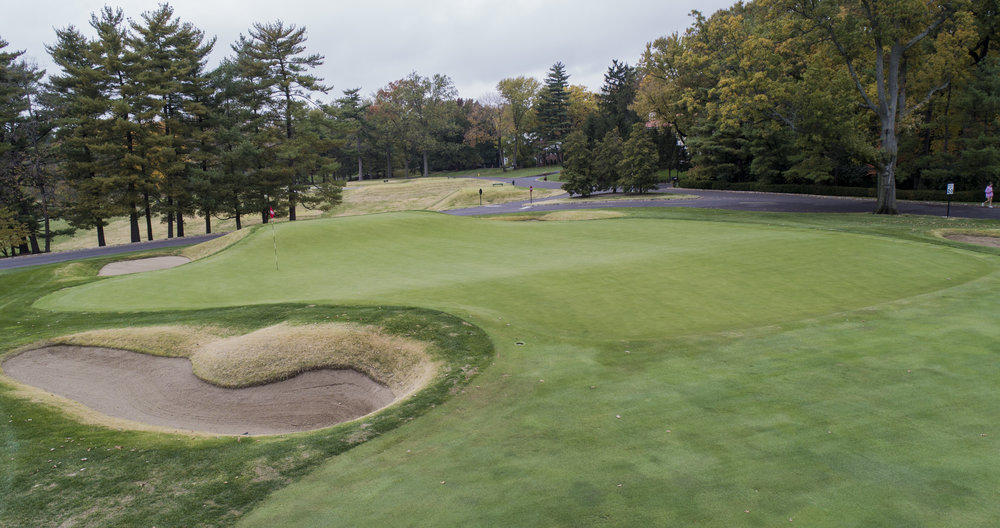
The front and back pin positions prove particularly difficult at SLCC's 15th.
Shoreacres – 7th – par 4 – 490 yards
From the new back tee box at Shoreacres 7th, the original shot values are restored to Seth Raynor’s design. A great tee shot will still leave a big hitter with a long-iron, hybrid or fairway wood shot into the Double Plateau green. While the green is large, it’s guarded by bunkers on each side and in back of the green, the toughest pin location being in the back. Shoreacres’ Double Plateau is more subdued than most of the Raynor versions.
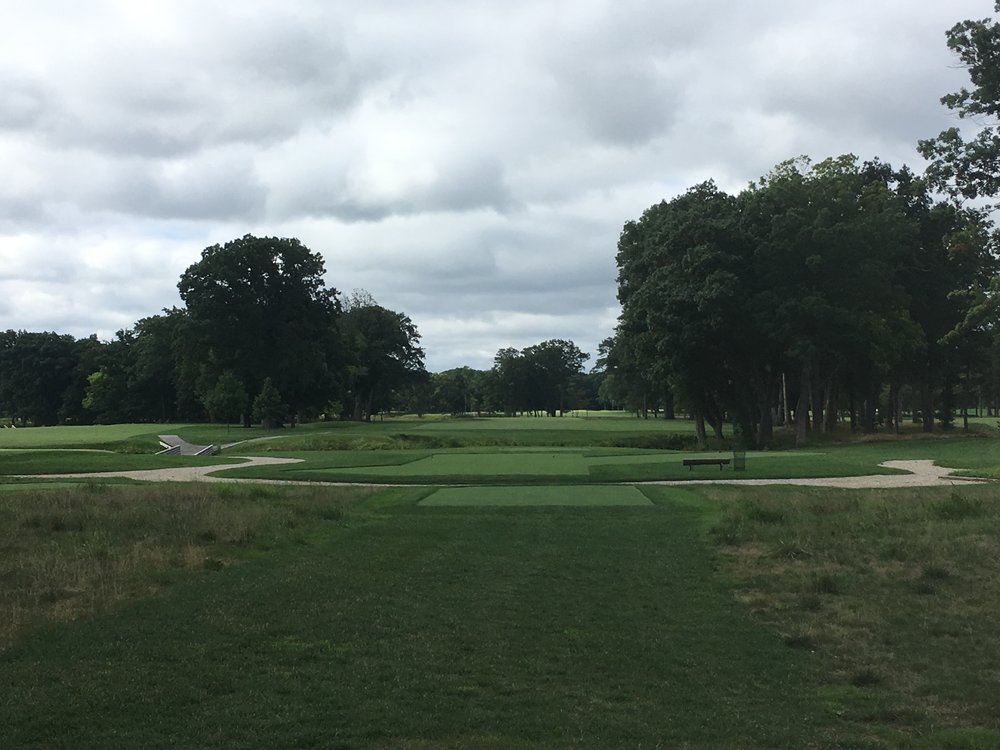
The 7th tee shot at Shoreacres
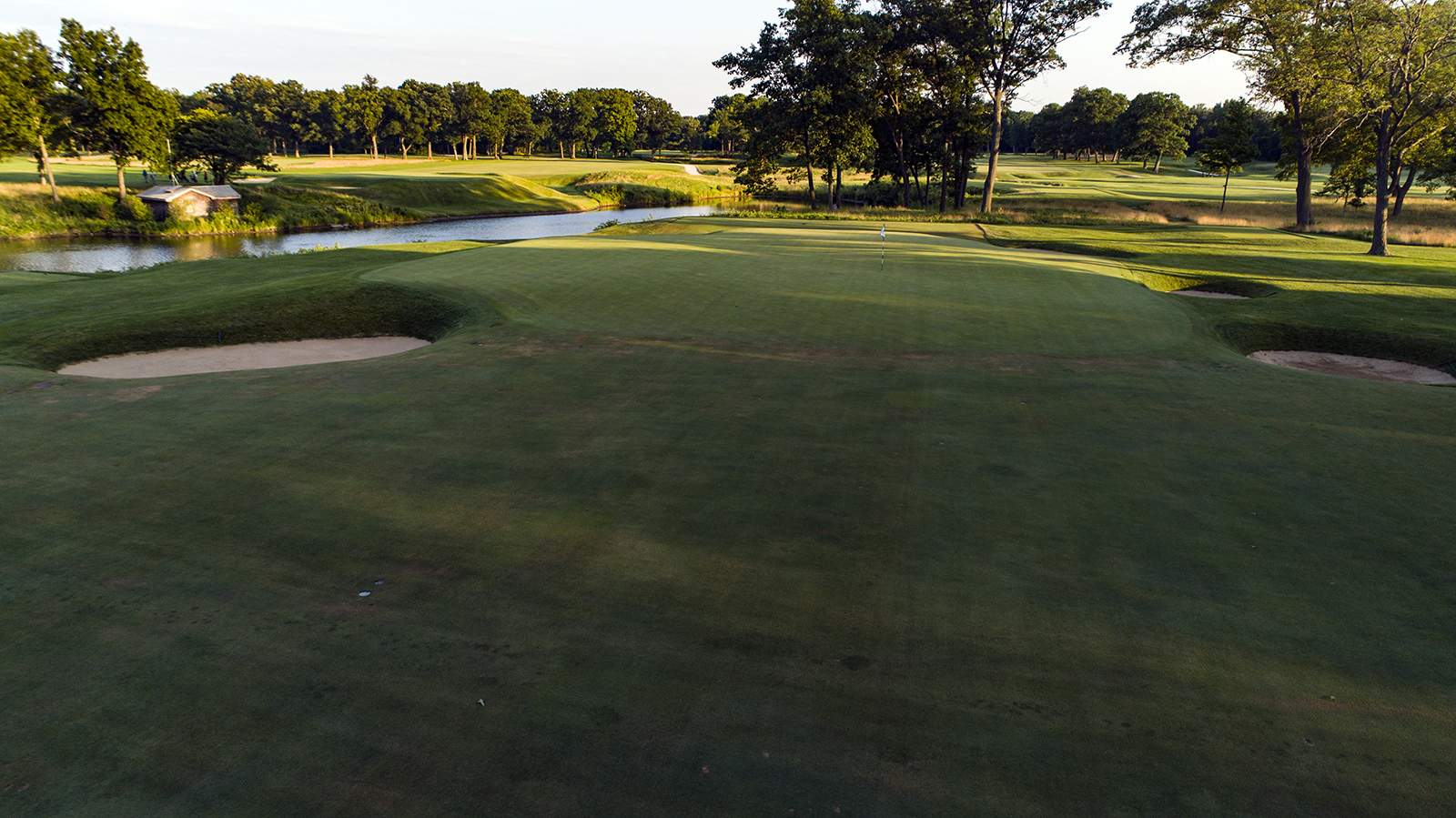
Short of the Double Plateau green on Shoreacres tough par-4 7th
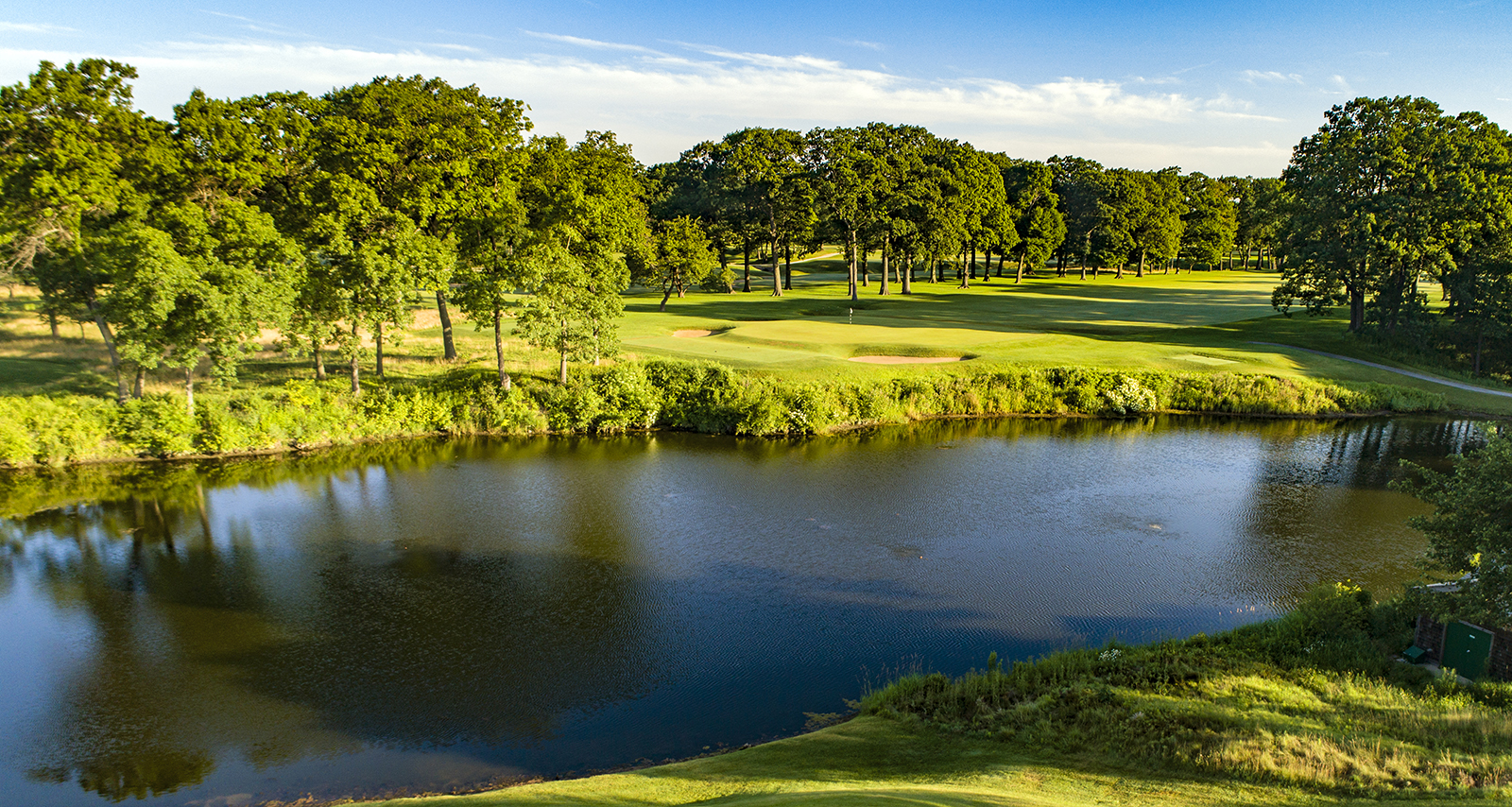
The 7th from a distance
Mountain Lake G.C. – 1st – par 4 – 368 yards
Raynor’s brilliant Florida design at Mountain Lake opens with a bang as he employed the Double Plateau green complex. Long hitters have to avoid the fairway bunker off the tee which sets up a short iron approach shot to the segmented green. The green’s orientation is such that the front right side is best approached from the right side of the fairway. The front left portion is best approached from the right side, and the back portion can be approached from either side.
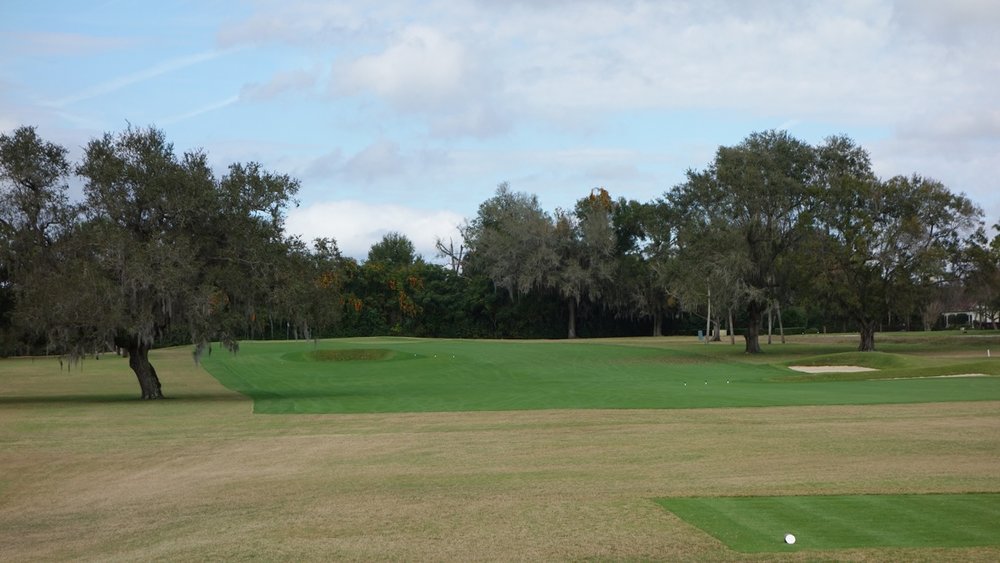
Mountain Lake's 1st hole, a double plateau - Photo Credit: The Bausch Collection at MyPhillyGolf.com
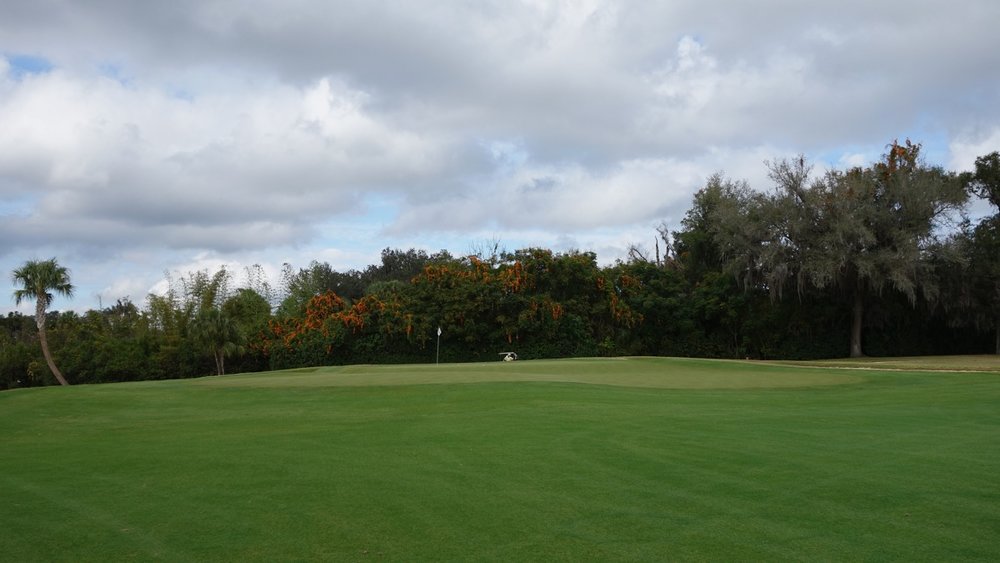
The elegant but challenging green - Photo Credit: The Bausch Collection at MyPhillyGolf.com
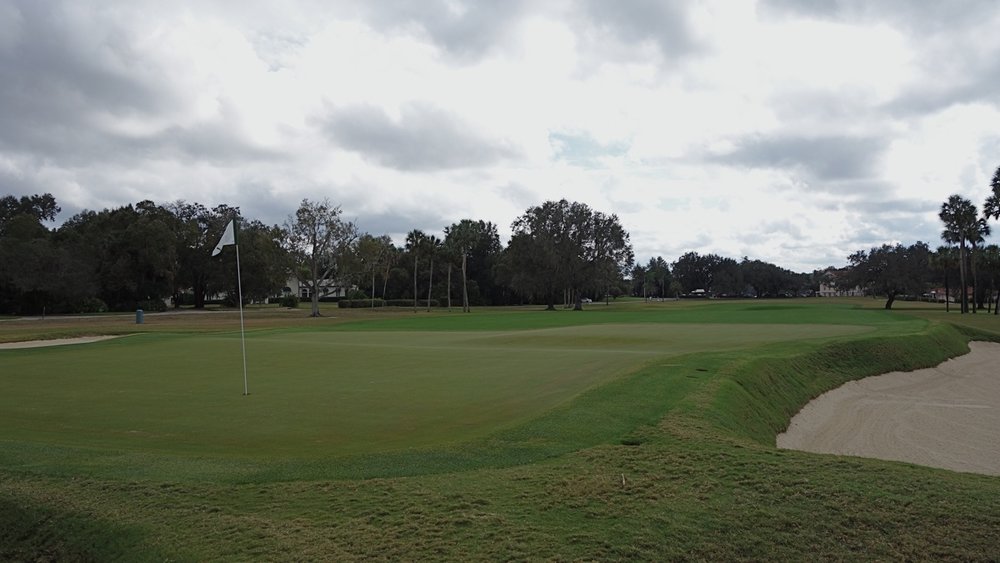
From behind Mountain Lake's 1st green, a double plateau - Photo Credit: The Bausch Collection at MyPhillyGolf.com
Morris County Golf Club – 4th – par 4 – 405 yards
At Raynor’s North Jersey design, the 4th hole is a great example of how Macdonald and Raynor liked to lay out their Double Plateau hole. Starting with a blind uphill tee shot, the 4th requires a ball in the fairway in order to control the spin of your approach shot. The Double Plateau green features a severe false front that repels any shots that are a little short, while the back bunker catches any over zealous approaches.
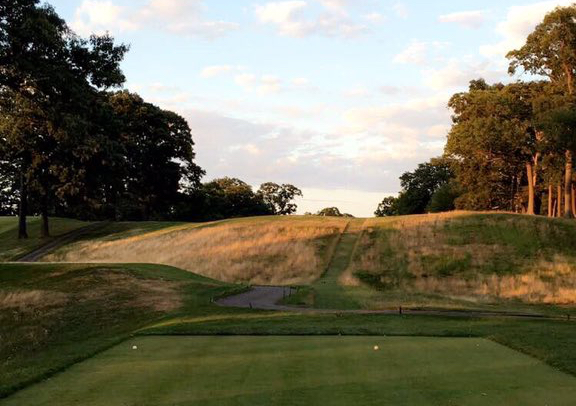
The blind tee shot at Morris County's 4th hole - Photo Credit: Spencer Waresk
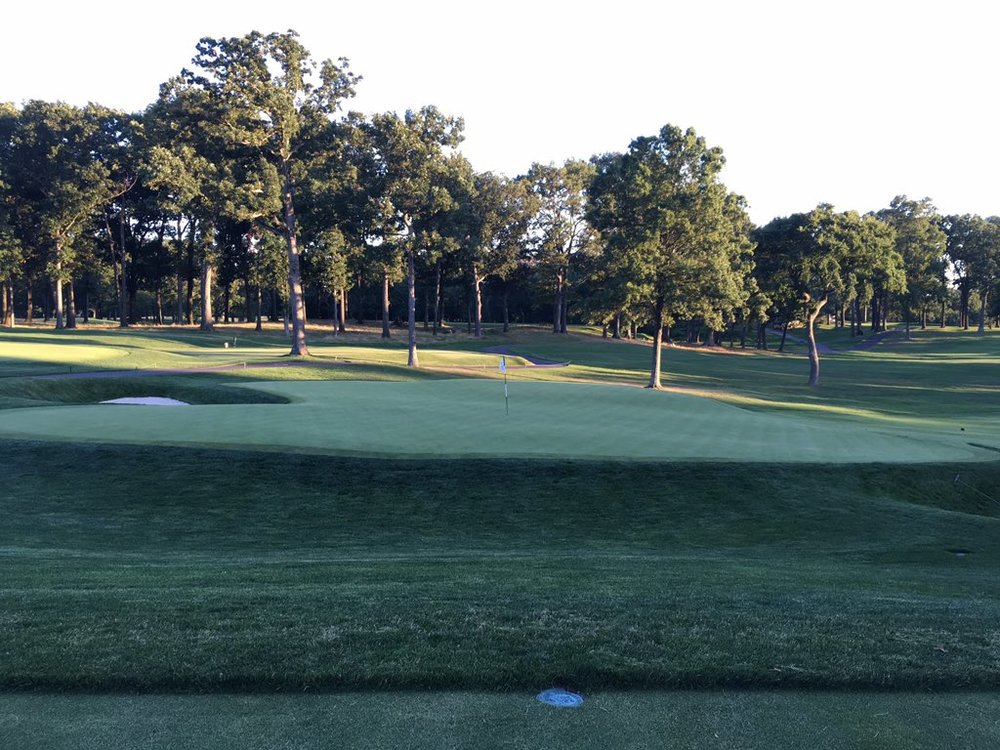
Distinct plateaus and troughs on the canted green - Photo Credit: Spencer Waresk
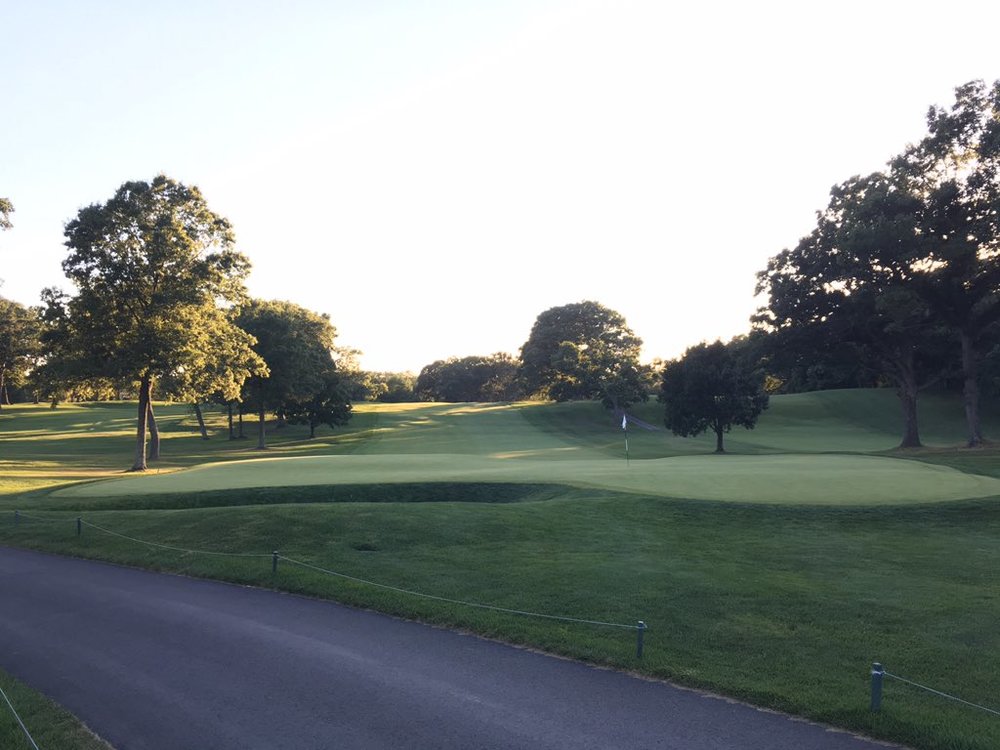
Looking back at the 4th at Morris County - Photo Credit: Spencer Waresk
Lookout Mountain Golf Club – 17th – par 4 – 410 yards
The 17th at Raynor’s Lookout Mountain features a semi-blind tee shot with a wide driving area. Positioning is key, a tee shot up the right carries risk but yields the best angle to attack the double plateau green. At 410 yards, a good drive will leave a player with a short to mid-iron in.
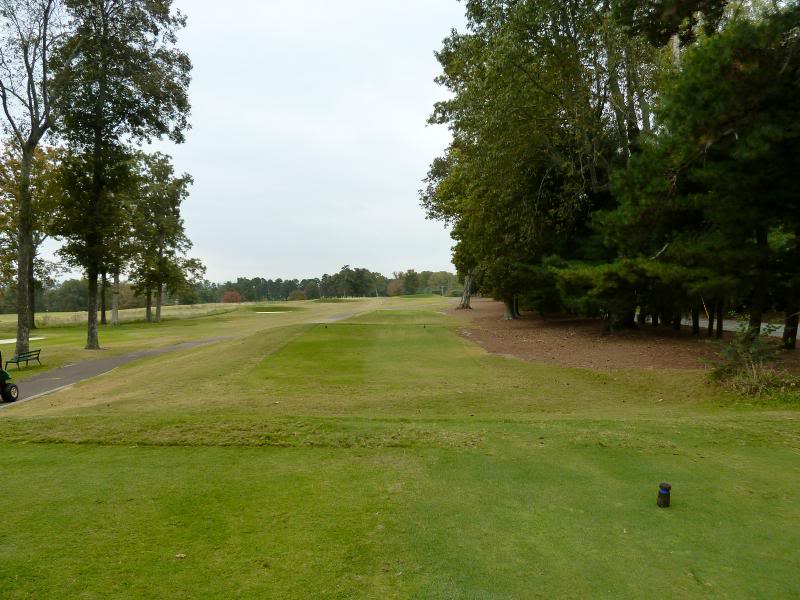
The tee shot at Lookout Mountain's 17th
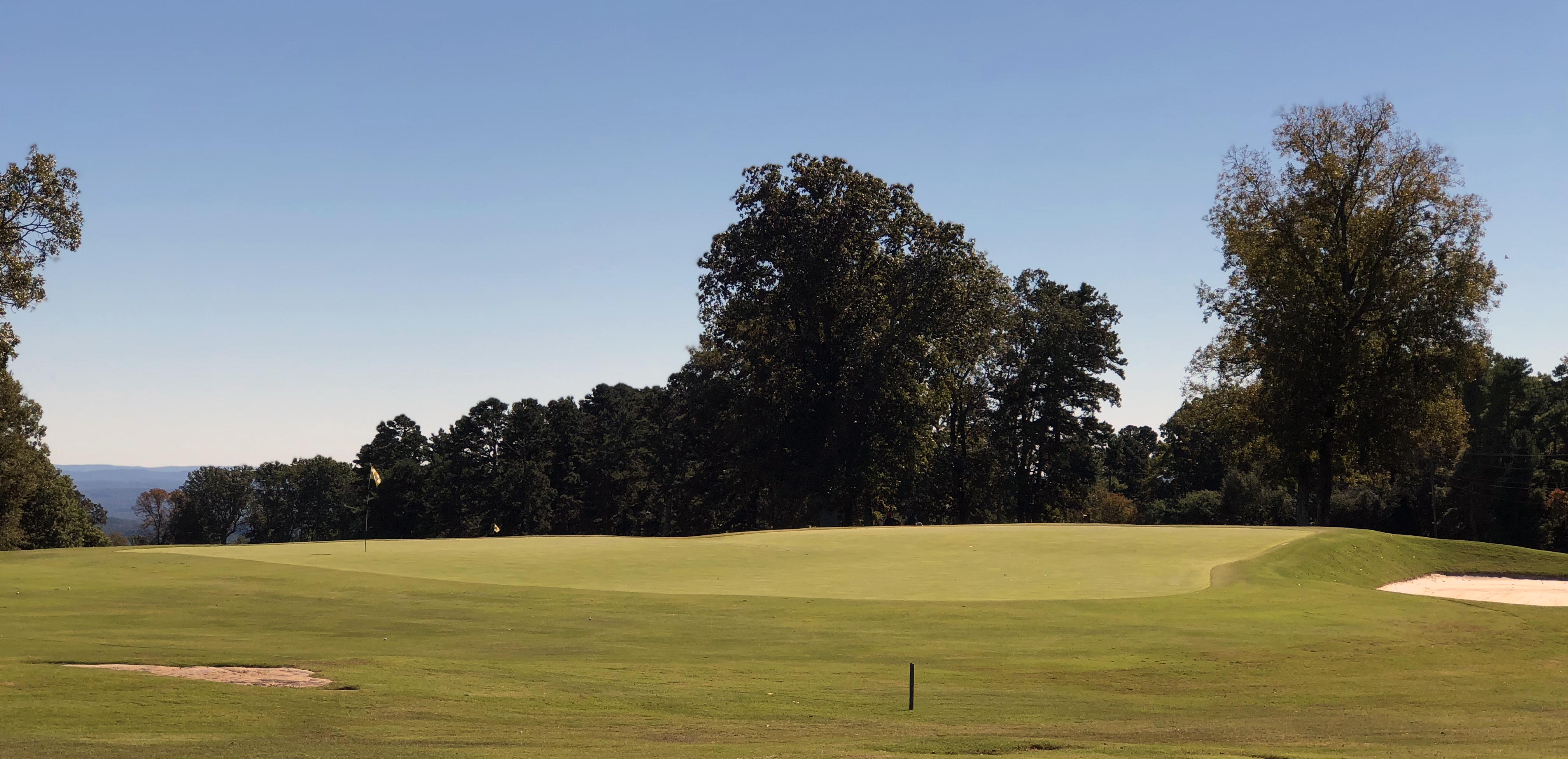
The Double Plateau green, with its bold scale
The Course at Yale – 17th – par 4 – 437 yards
The brutish Yale finishes with a bang starting with the long par 4 17th. The tee shot calls for a big drive over a ridge to a blind fairway. Modern technology has turned this hole into a wedge approach for collegiate players as opposed to the long-iron that was required in the first 50 years of its design. The 17th cascades downhill and features a distinct Principal’s Nose bunker. The hole is named after the “Nose” that sits about 50 yards short of the green. The green is bold and subtlely falls away from players with the slope of the land. This can cause many shots to tumble over the green, especially with a long-iron.
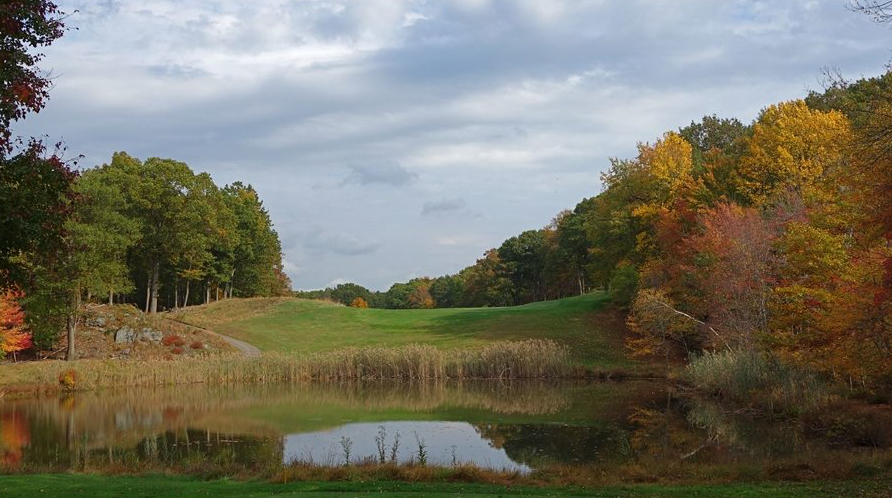
The blind tee shot at the 17th at Yale - Photo Credit: The Bausch Collection at MyPhillyGolf.com

The approach which is obstructed by Raynor's principal's nose bunker - Photo Credit: The Bausch Collection at MyPhillyGolf.com
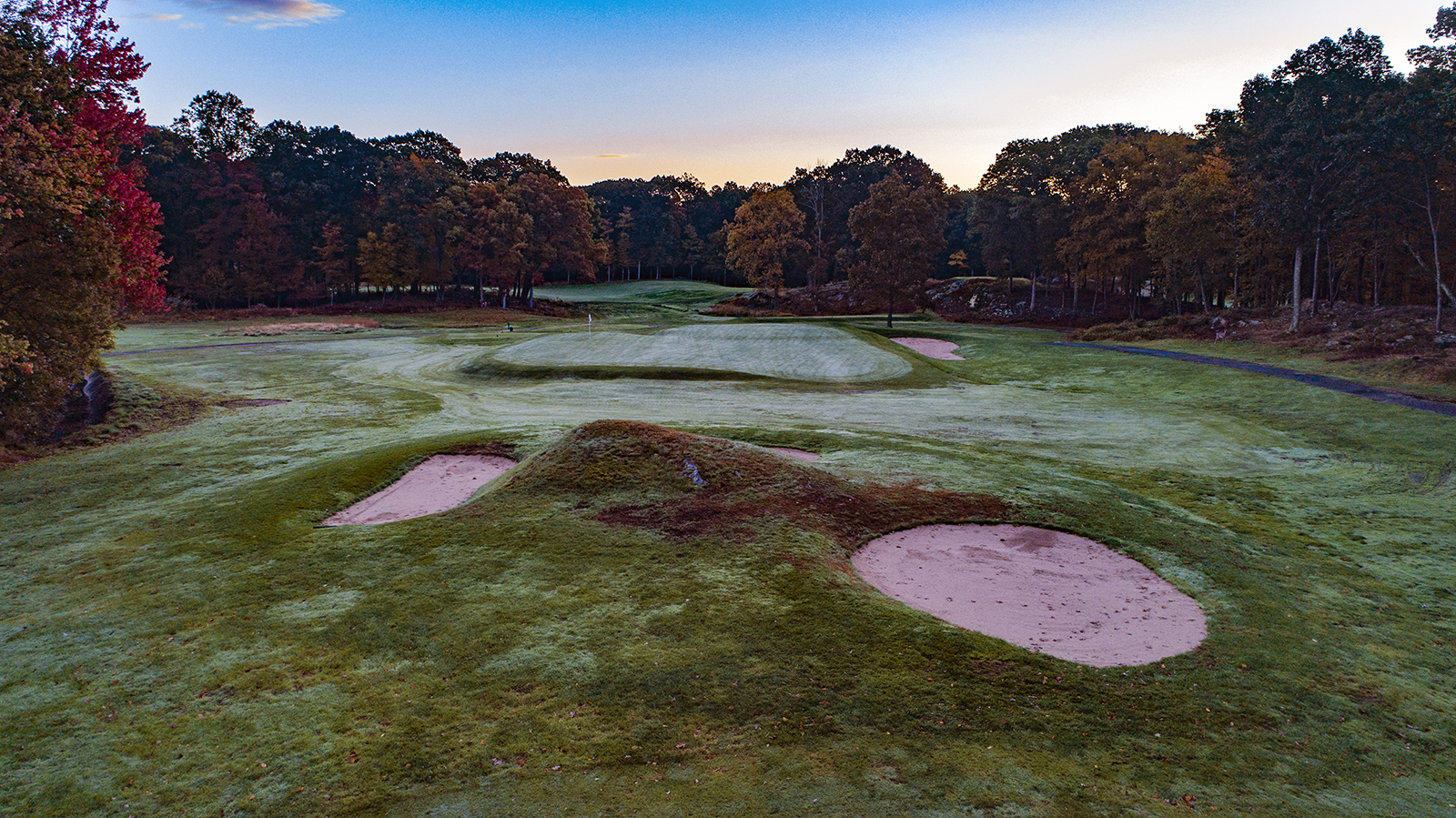
A great angle shot of the Double Plateau green at Yale's 17th.
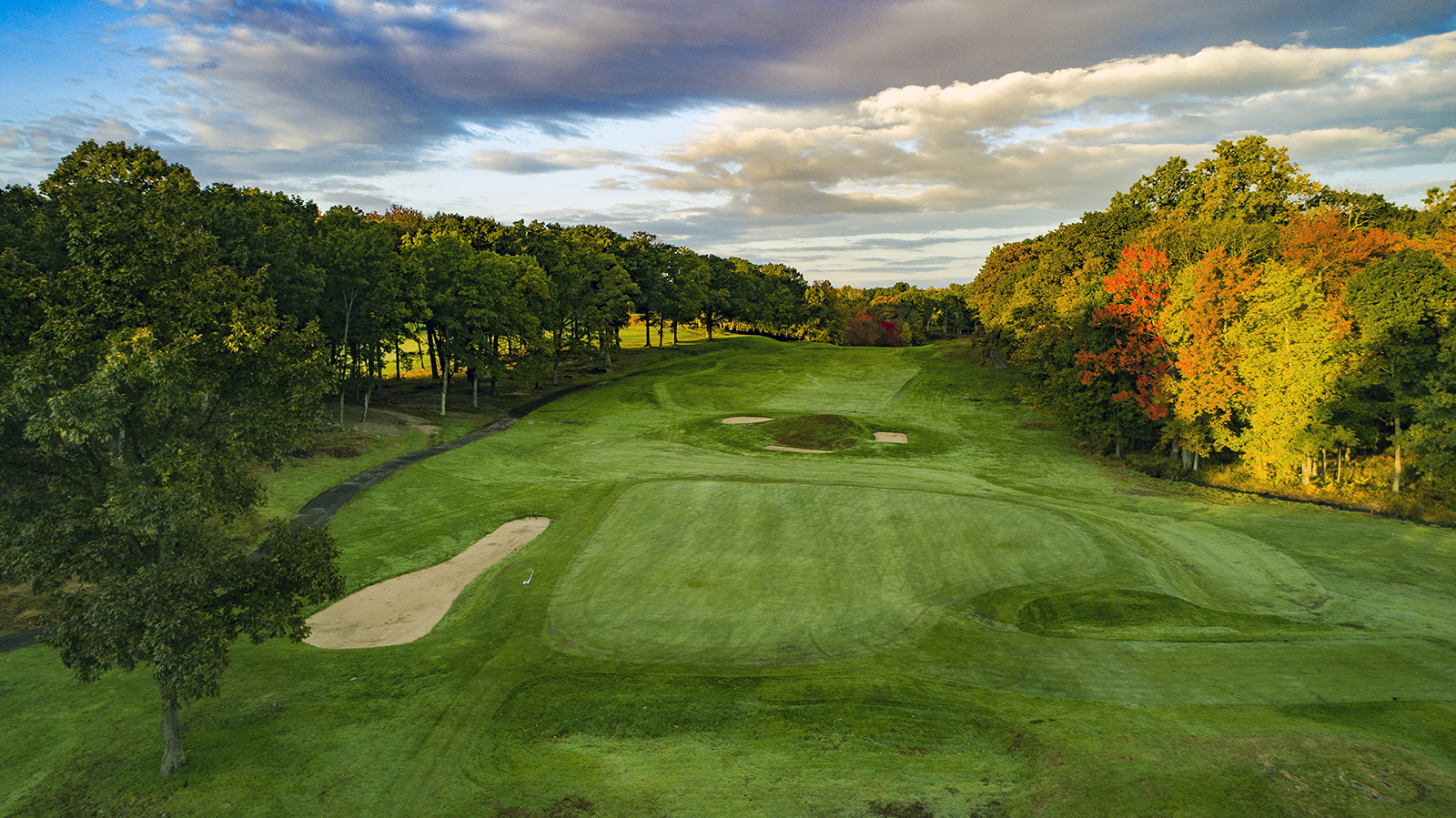
Behind the great 17th at Yale shows the dramatic downhill second shot to the double plateau green.
Yeamans Hall Golf Club – 1st – par 4 – 427 yards
The lengthy Double Plateau par-4 opener makes for a tough start at Raynor’s Yeamans Hall. After a good tee shot, players are faced with a mid-iron approach to a bold green. Yeamans Hall’s Double Plateau has some of the sharpest undulations of any in the world.
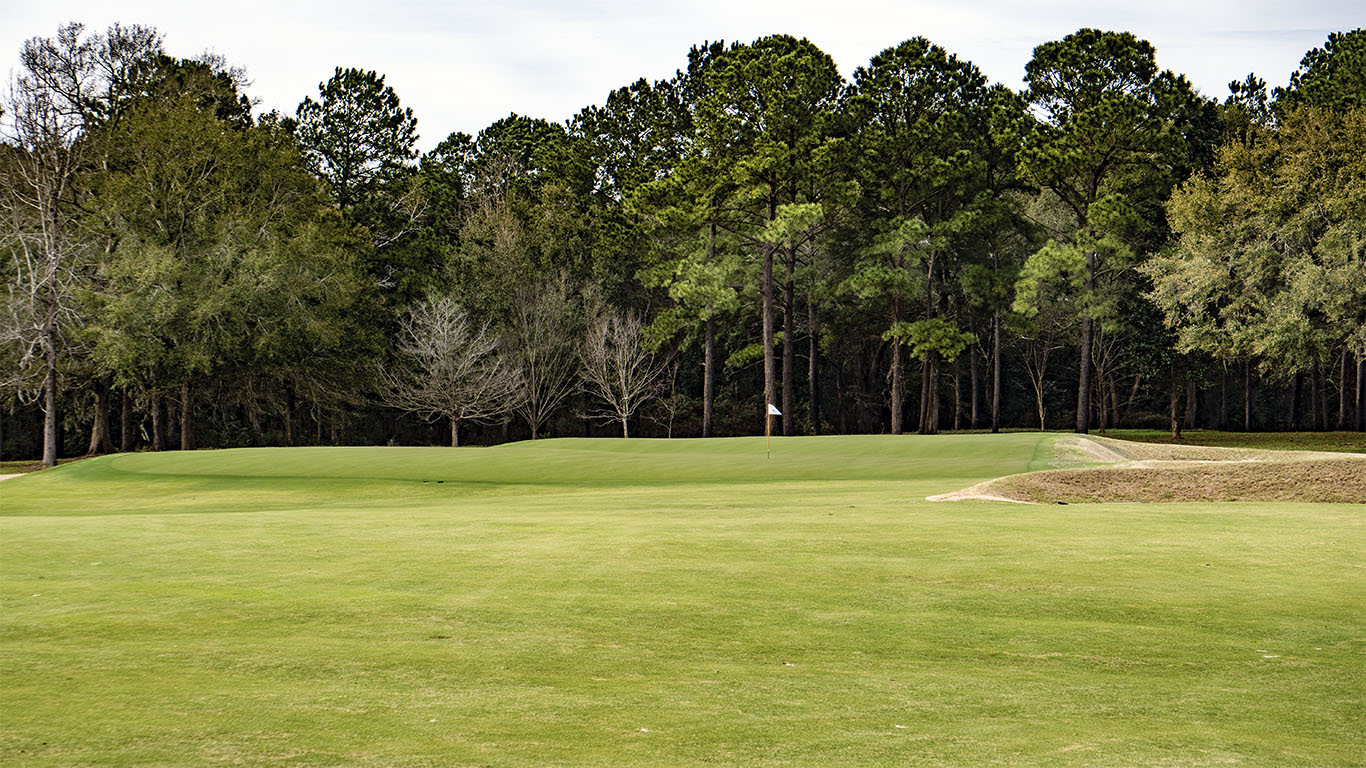
Short of the green on the bold Double Plateau opener at Yeamans Hall.
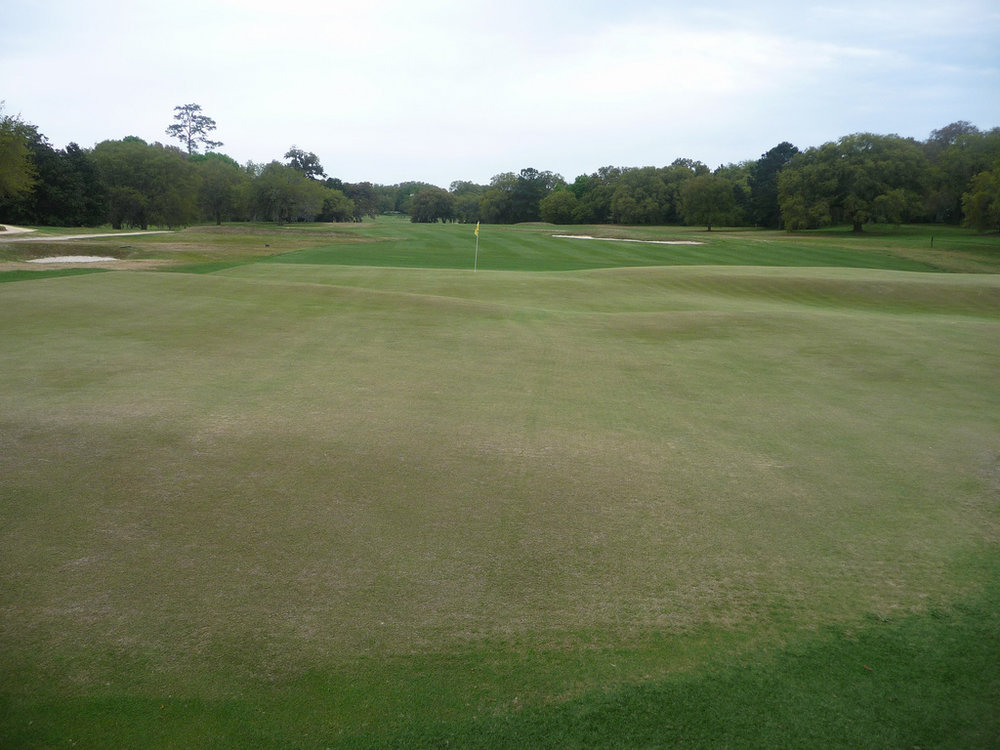
The look back bringing into stark relief the contours on Raynor's Double Plateau
Sleepy Hollow Golf Club – 12th – par 5 – 541 yards
The 12th at Macdonald’s Sleepy Hollow is a dogleg left par-5 that gives the long hitters a go at the challenging Double Plateau green in two. The green is a subtle L-shape and has a deep bunker that guards the inside of the L (right side).
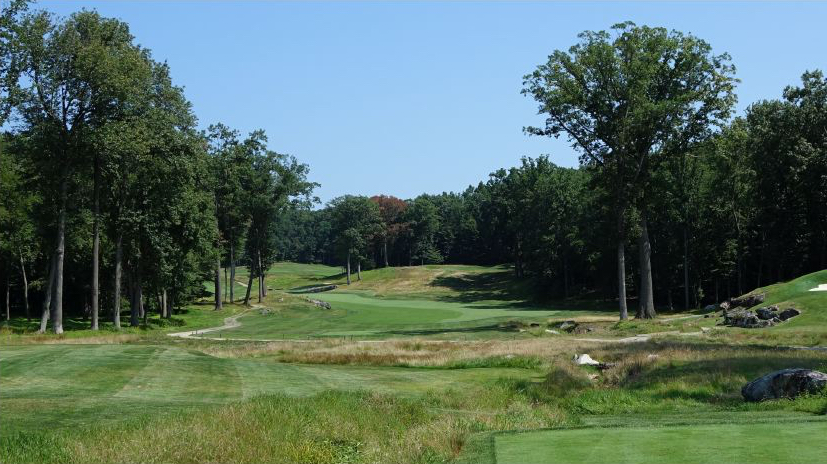
The tee shot at Sleepy Hollow's 12th hole - Photo Credit: The Bausch Collection at MyPhillyGolf.com
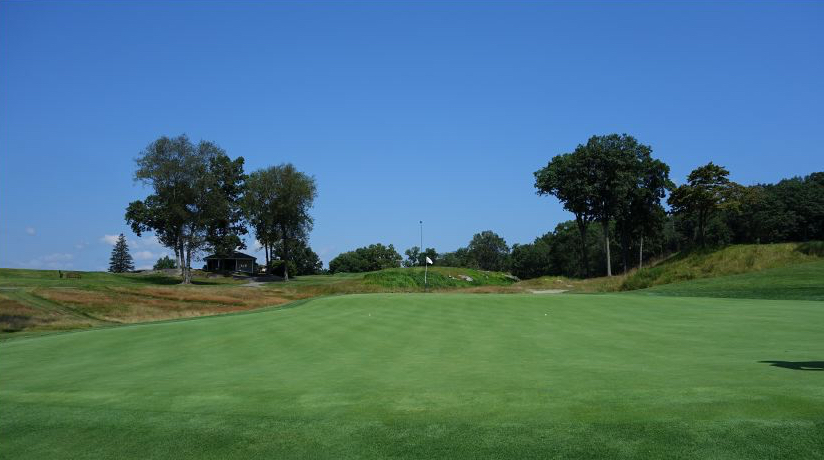
The Double Plateau green - Photo Credit: The Bausch Collection at MyPhillyGolf.com
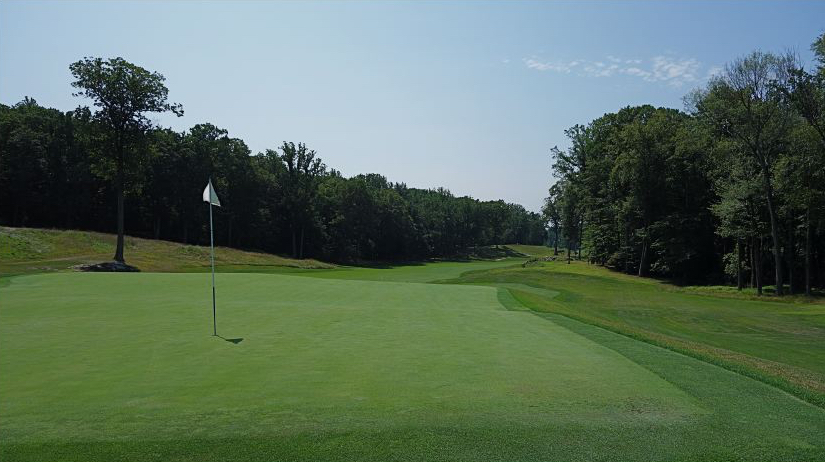
A look back down the fairway from the upper back plateau - Photo Credit: The Bausch Collection at MyPhillyGolf.com
North Shore Country Club (NY) – 14th – par 4 – 417
The oft-overlooked Seth Raynor design features a semi-blind tee shot that crests a hill. Once over the hill, the grand Double Plateau green complex is revealed. The front right and back right plateaus are guarded by a bunker. The front portion accepts a low running shot and a shot a little left will feed in. The front left side is propped up with the land’s natural slope and is best approached from the right side of the fairway.
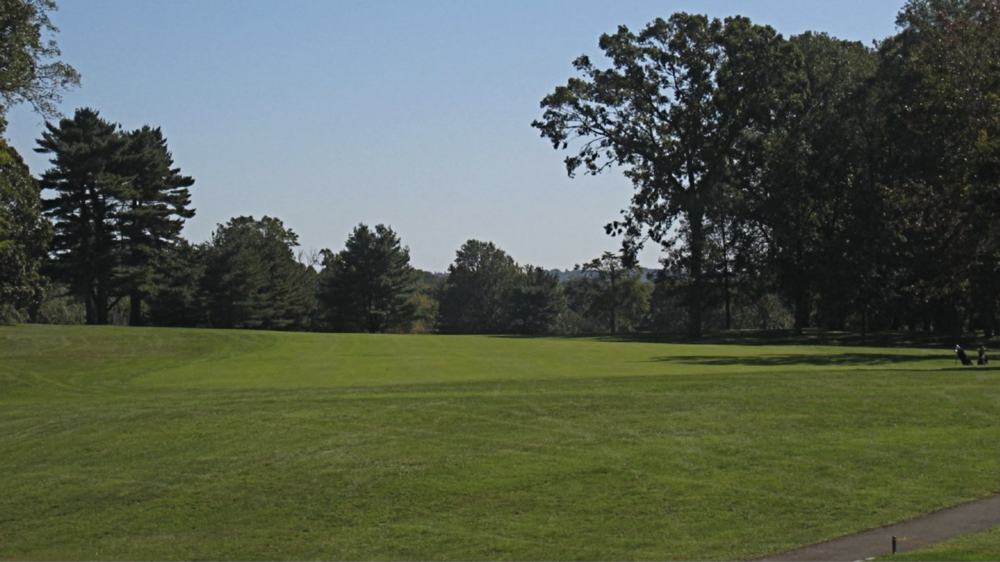
The blind tee shot at the 14th - Photo Credit: The Bausch Collection at MyPhillyGolf.com
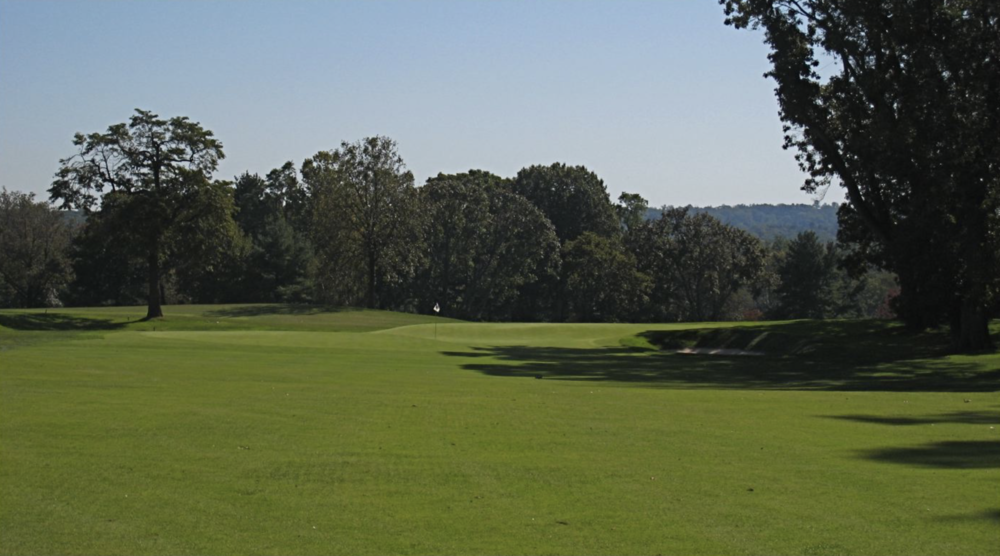
The approach into the green, sloped to send balls into the right bunker - Photo Credit: The Bausch Collection at MyPhillyGolf.com

The look from behind the bold green reveals more trouble lurking
Pasatiempo – 16th – par 4 – 387 yards
At the public access Pasatiempo, we get to see Alister MacKenzie’s take on the Double Plateau. Like many of Macdonald and Raynor’s holes, the tee shot is blind. A good tee ball will leave a short-iron approach to the severely sloped back to front green complex. Unlike Macdonald and Raynor’s creation, this Double Plateau isn’t an L-shaped green, but rather, a long and narrow one. The slopes make it important for players to control their spin in order to stay on the correct tier and have a good birdie opportunity.
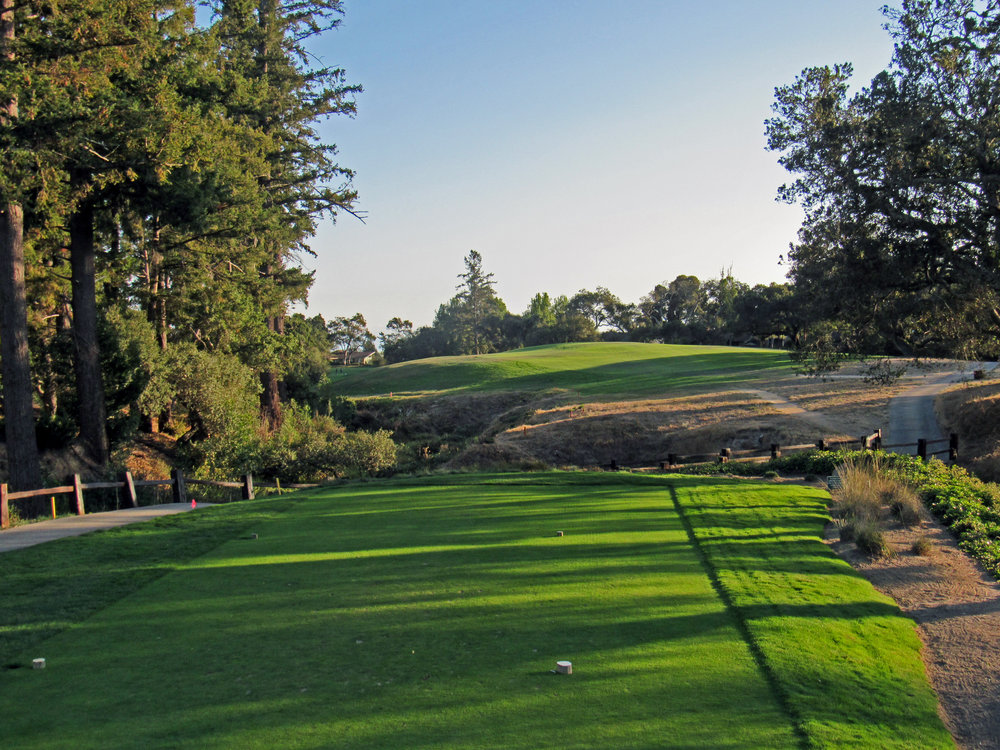
The blind tee shot at Pasatiempo's 16th
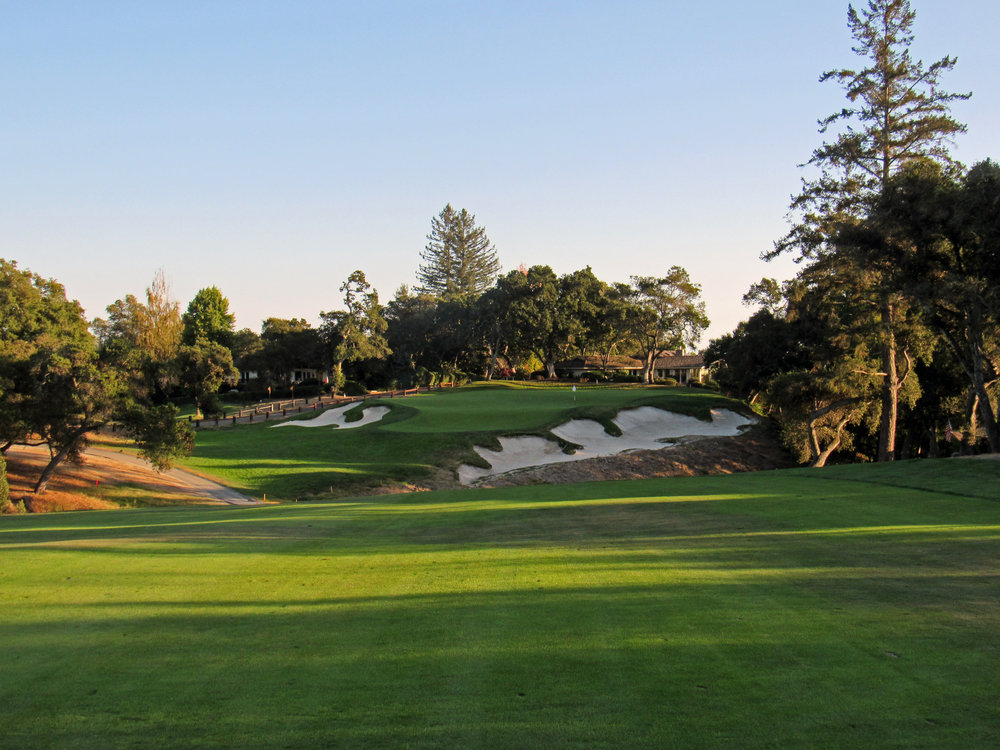
The approach into the stunningly bold green
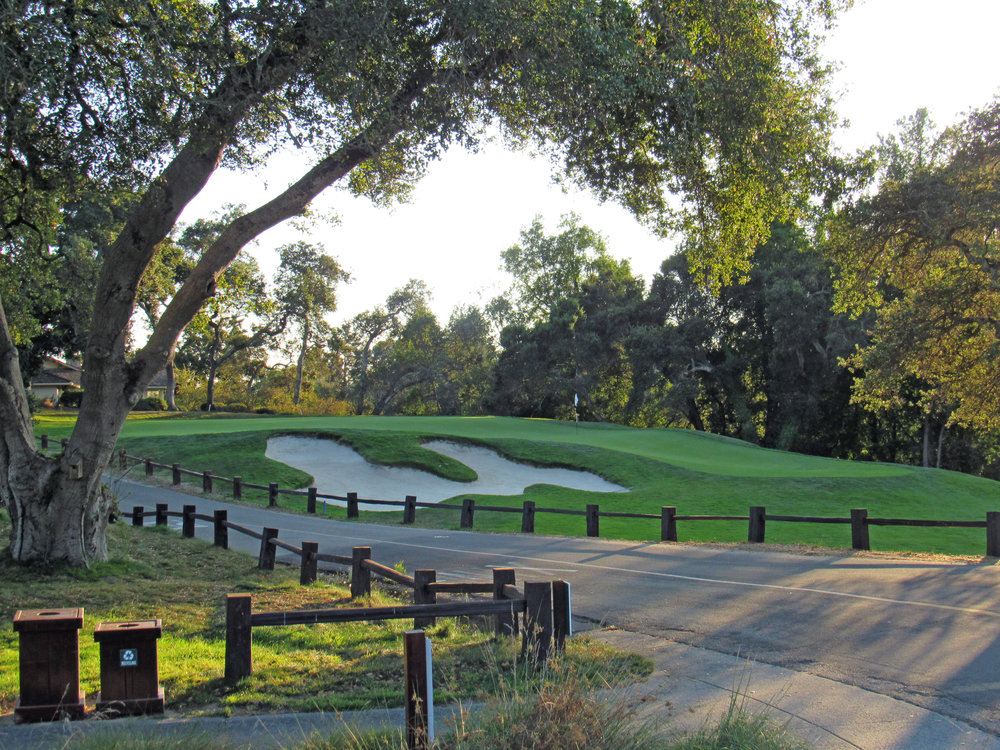
The view from the left of the green highlights the severe slopes between tiers
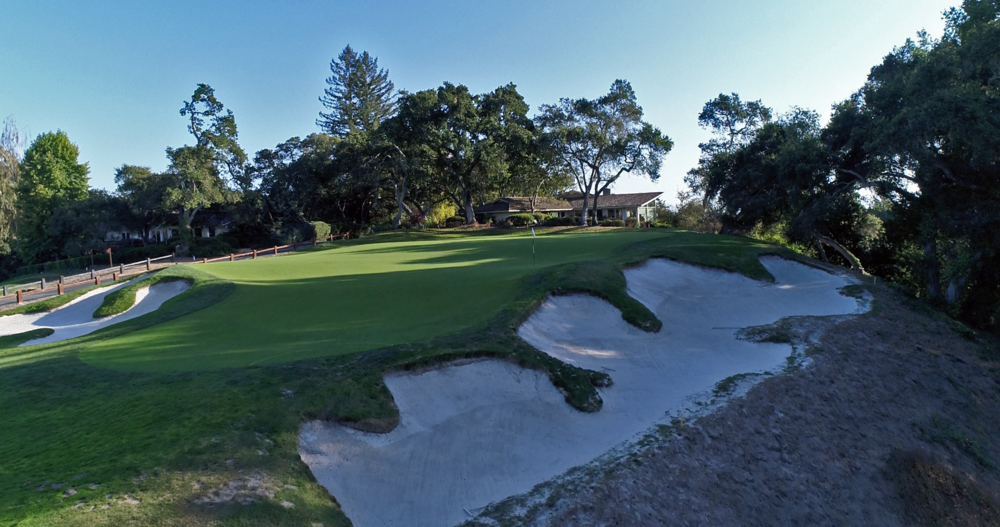
No arguments against the Good Doctor's choice of Pasatiempo's 16th as his favorite par-4


 by
by 
